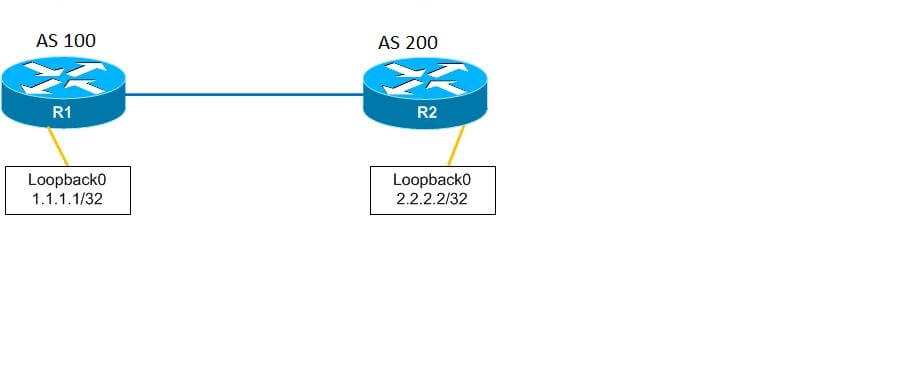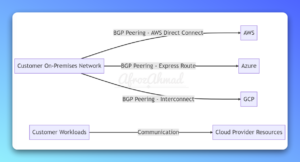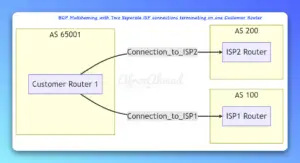eBGP Peering
——————-
We are able to peer with a tool in different Autonomous System utilizing eBGP.
The AD(administrative distance) for eBGP friends is 20.
By default the time-to-live(TTL) is about to 1 for eBGP classes.
If a eBGP session is configured between two non-directly linked friends,the TTL
have to be elevated or manipulated.
That is additionally applies when a loopback interface is used to attach two eBGP neighbors.
The widespread technique to enhance a eBGP TTL is by utilizing command “ebgp multihop [TTL value]”.
There are 3 ways to control TTL subject in eBGP classes.
The syntax for eBGP peering with loopback interfaces is:-
Suppose right here in determine R1 is in AS 100 and R2 is in AS 200,and we wish to set up
connectivity utilizing there respective loopbacks.
R1(conf)#router bgp 100
R1(config-router)#neighbor 2.2.2.2 remote-as 200
R1(config-router)#neighbor 2.2.2.2 update-source loopback0
R1(config-router)#neighbor 2.2.2.2 ebgp-multihop 2
R1(config-router)#finish
For R2
R2(conf)#router bgp 200
R2(config-router)#neighbor 1.1.1.1 remote-as 100
R2(config-router)#neighbor 1.1.1.1 update-source loopback0
R2(config-router)#neighbor 1.1.1.1 ebgp-multihop 2
R2(config-router)#finish
Right here within the above state of affairs “update-source loopback0” command is used as a result of
we’re peering with loopback interfaces right here and by default BGP takes the
linked interface as replace supply and if we have now not up to date the supply
of the BGP packets by default it had taken the FastEthernet interface.
Additionally we have now taken “ebgp-multihop 2” as a result of router counts loopback interface
as hops so the primary hop is from R1 FastEthernet to R2 FastEthernet after which the second
hop as R2 loopback0 interface,thats why we have now used “ebgp-multihop 2”.
If we have now not-mentioned the hop(2) within the command “ebgp-multihop “the BGP has
taken as most hop as 255.
There are two extra methods to control TTL subject in eBGP,first i’ve talked about
as “ebgp-multihop”.
The second is “disable-connected-check” function,it’s largely used the place the eBGP
session between two units is routed over one other transit router,the syntax is:-
R2(config-router)#neighbor 1.1.1.1 disable-connected-check
The third choice is “TTL-security hops [hop count]”,the syntax is:-
R2(config-router)#neighbor 1.1.1.1 ttl-security hops 2
The “ttl-security” ,When this function is enabled, BGP will set up and keep
the session provided that the TTL worth within the IP packet header is the same as or better
than the TTL worth configured for the peering session. If the worth is lower than
the configured worth, the packet is silently discarded and no Web Management
Message Protocol (ICMP) message is generated. This function is each efficient and
straightforward to deploy.
Right here within the above instance we’re saying to router that the TTL have to be equal to
or better than 2 to ascertain eBGP peering,if the TTL is lower than 2 the
neighborship won’t kind.
- Netgear Orbi RBK852 Review: The Ultimate Tri-Band Mesh WiFi 6 System for Your Home - April 9, 2024
- Netgear Orbi Review [In General] - April 8, 2024
- Netgear Router Orange/Amber light: Causes & Fixes [With Infographic] - April 8, 2024




